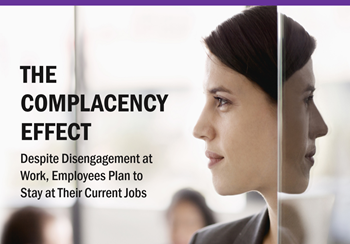Unlike machines, you can’t tune the workforce using buttons to increase work output. You’ll need a more intricate approach to get the most out of your staff. How can you turn your workforce into a productivity powerhouse? There’s no single way to do it, but here are some proven strategies for boosting employee productivity.
1. Fine-tune your hiring process
In today's cultured workplace, skills and qualifications alone are not enough to judge job candidates. Calibrate your hiring processes to screen employees based on their cultural fit with the company and the rest of the community. However, determining cultural fit may not be easy — it often requires thorough social evaluations and experimentation.
Focusing on cultural fit may not seem important during hiring, but it matters a great deal. First, it’s nearly impossible for employees to assimilate into a company when they’re opposed to its values in the first place. Secondly, poor cultural fits result in bad hires that could be toxic to HR productivity.
According to SHRM, replacing a single worker can cost up to 60% of the employee’s annual salary in severance and onboarding costs. So, a bad hire is not a risk worth taking.
2. Focus on HR experience and satisfaction
In a recent Gartner survey, 46% of employees said they were generally dissatisfied with their work experience and only 13% of those surveyed reported satisfaction with their employment experience. Poor work experience dampens morale and adversely affects work performance. In other words, happy employees are more productive.
You should continually gauge worker experience using both digital HR analytics tools and traditional methods. More importantly, adopt ways of improving employee satisfaction, such as employee engagement, fair compensation and appreciation, incentivization, wellness programs, and team-building exercises. Make them feel like an invaluable part of the organization.
3. Improve skills through training
One of the reasons many employees perform poorly is the lack of adequate skills to keep up with evolving job demands. Employees need regular refresher courses and training sessions to reaffirm and grow their skill sets.
Allocate resources and time to regular training, coaching, mentorship, and workshop programs centered around essential technical and soft skills. Upskilling is an integral part of employee development, and presents opportunities for career growth. Learning additional skills also promotes versatility and efficiency in the workplace, which benefits both the employees and employer.
4. Empower them with the right tools
Besides the right skill set, employees need various tools and equipment to get things done. Equip your employees with all the necessary resources to complete their tasks efficiently without difficulties. In the modern workplace, tools means the latest tech, including robust workstations, software applications, communication systems, and a conducive working environment.
The array of equipment and tools required largely depends on your employees’ preferences, the nature of their jobs, and your workplace model. For instance, remote employees need online collaboration tools to communicate and share workloads. Essentially, these tools determine the scope and speed at which employees can do their work.
5. Create a flexible workplace
Employees want a relaxed work atmosphere that suits their lifestyles and provides a favorable work-life balance. A flexible workplace is one that promotes freedom with responsibility. For instance, employees can work from home occasionally and control their work hours and schedules to some extent as long as they complete assignments on time.
As it turns out, minimal supervision and a loosened work environment motivates productivity. In a report titled The State of Flexible Work Arrangements, 78% of employees strongly agree that work flexibility leads to more productivity.
Access the latest business knowledge in HR
Get Access



Comments
Join the conversation...